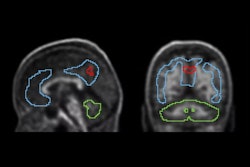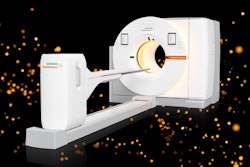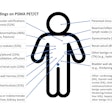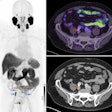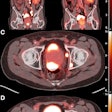Columbia University researchers in New York City have reported that worsening depression in older adults is related to higher levels of Alzheimer’s disease pathology, specifically the accumulation of tau protein.
The finding is from an analysis of 300 participants who underwent multiple F-18 flortaucipir tau PET scans between 2015 and 2022 and suggests depression could be a modifiable risk factor for the disease, noted lead author Daniel Talmasov, MD, and colleagues.
“Depressive symptoms may have particular relevance as an indicator of Alzheimer's pathology progression and could represent a target for research into modifiable risk factors for Alzheimer's disease,” the group wrote. The study was published April 9 in the American Journal of Geriatric Psychiatry.
Despite evidence suggesting a link between depression and faster clinical progression in patients with Alzheimer’s disease, the biological mechanisms underlying this association are poorly understood, the authors explained.
To address the knowledge gap, the group explored whether there is a longitudinal relationship between depressive symptoms and increased neurofibrillary tau tangles in the brain, a hallmark of the disease.
The researchers gathered data from 300 patients (median age, 74) from the Alzheimer's Disease Neuroimaging Initiative, a project launched at the University of California, San Francisco in 2003 to study the progression of the disease. All patients had at least two F-18 flortaucipir PET scans to quantify tau levels between July 2015 and April 2022, as well as several Geriatric Depression Scale (GDS) scores over the period.
Clinically, 162 individuals were cognitively unimpaired, 99 had mild cognitive impairment, and 42 had dementia due to Alzheimer's disease. The majority of participants (n = 260) had minimal depressive symptoms, while 37 participants showed mild depressive symptoms (GDS 5-8) and six had moderate symptoms (GDS 9-11).
According to the analysis, GDS scores were positively correlated with annualized tau accumulation rates. Specifically, a 5-point increase in GDS score (approximately the difference between minimal and mild depression) corresponded to a 1.2 percentage point difference in annual tau accumulation, the group reported.
“These results support the hypothesis that the burden of depressive symptoms is associated with the rate at which tau accumulates,” the group wrote.
Ultimately, the study sample was limited to the existing ADNI cohort as of 2023, in which most participants were white, non-Hispanic, and college-educated, and thus the findings should be replicated in a more diverse cohort, the authors noted.
Moreover, the retrospective design of the study prevents inferring a causal or directional relationship, the researchers added.
“Future studies could ultimately explore whether managing depression mitigates [Alzheimer’s disease] progression by influencing the trajectory of tau accumulation,” the group concluded.
The full study can be found here.






